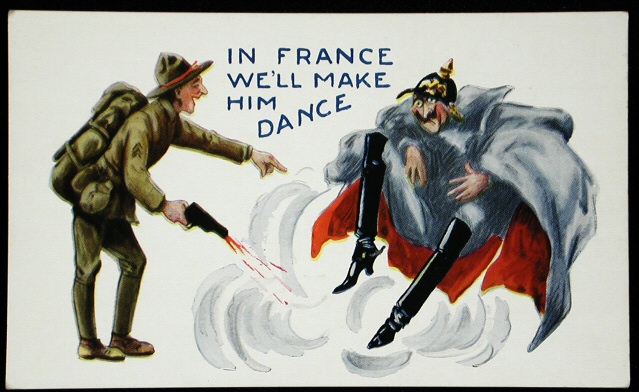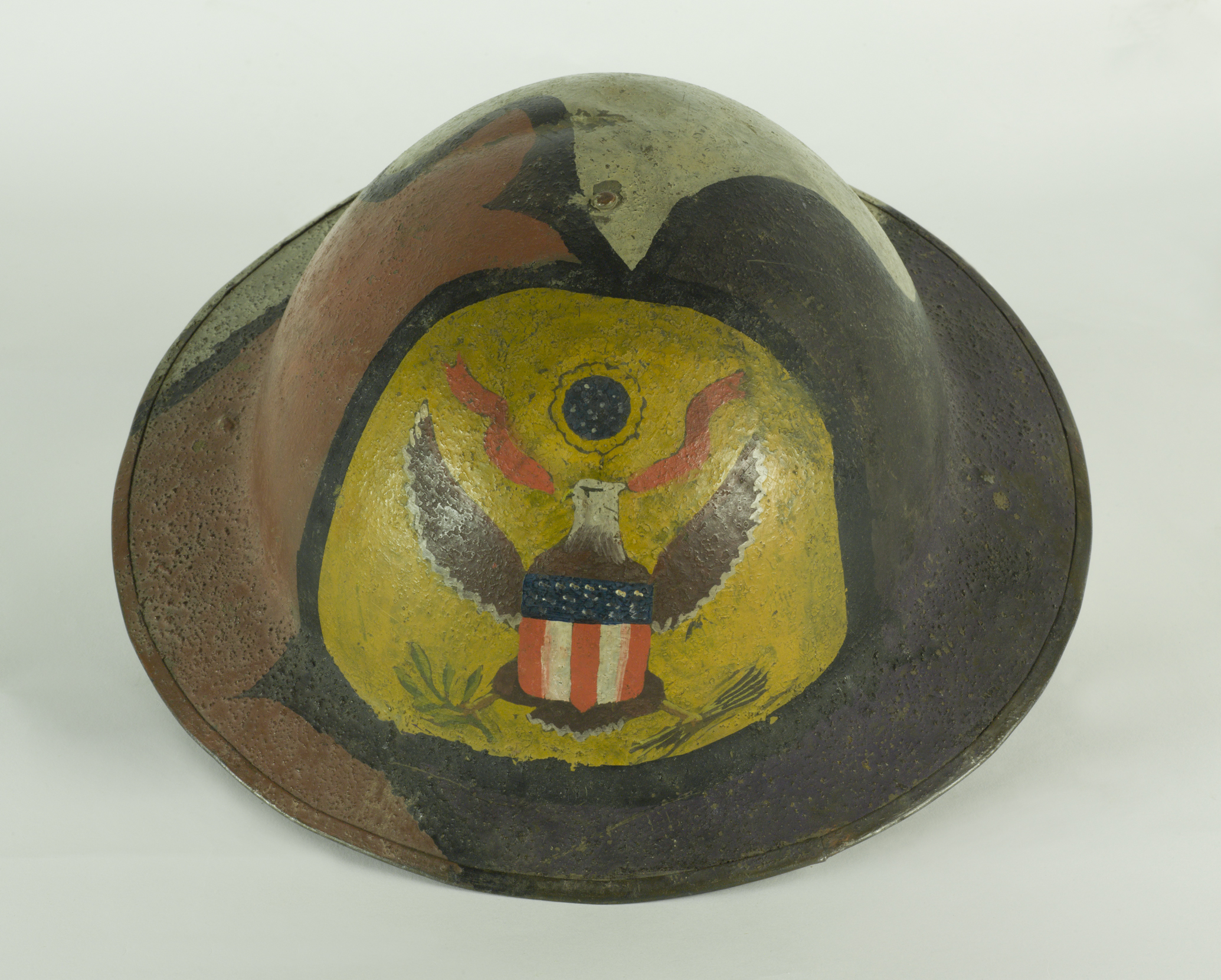Story
The Eleventh Hour
How We Came to Honor Veterans Day
On November 11 we celebrate Veterans Day, an annual recognition of our men and women who have served in uniform. Some will remember that this celebration used to have a different name—and purpose.
In the fall of 1918, the First World War was in its fourth brutal year. The United States had entered the fray a year before, pouring tens of thousands of “Doughboys” into the front lines in France each month. With their British and French allies, these fresh American troops helped turn the tide on a front that’s become synonymous with its horrific trench warfare. Finally, the end was in sight. With conditions set by French military commanders, the German leadership accepted an armistice to begin at the 11th hour of the 11th day of the 11th month—11:00 am on November 11, 1918.

We’ll Make Him Dance, a Bernhardt Wall illustrated postcard from World War I.
For the Allied nations, this end to the “war to end all wars” was an anniversary worth celebrating and commemorating, extolling the great victory they had won over the Central Powers and remembering its tremendous cost in human life. Nearly ten million soldiers were killed in action in World War I. The toll rises to nearly twenty million lives lost when known civilian deaths are included. In the decade following the war, November 11 became known as Remembrance Day among Commonwealth nations and Armistice Day in France and the United States.
Despite lofty rhetoric about lessons learned in this terrible war, peace among major international powers lasted for just two decades before a Second World War would dwarf the death and misery experienced in World War I. After soldiers returned from that war—and the subsequent Korean War—many veterans organizations and politicians proposed renaming Armistice Day to Veterans Day, to recognize this latest generation in uniform. Their wish became reality in 1954, when President Eisenhower signed a bill to that effect, creating the Veterans Day we know today.

